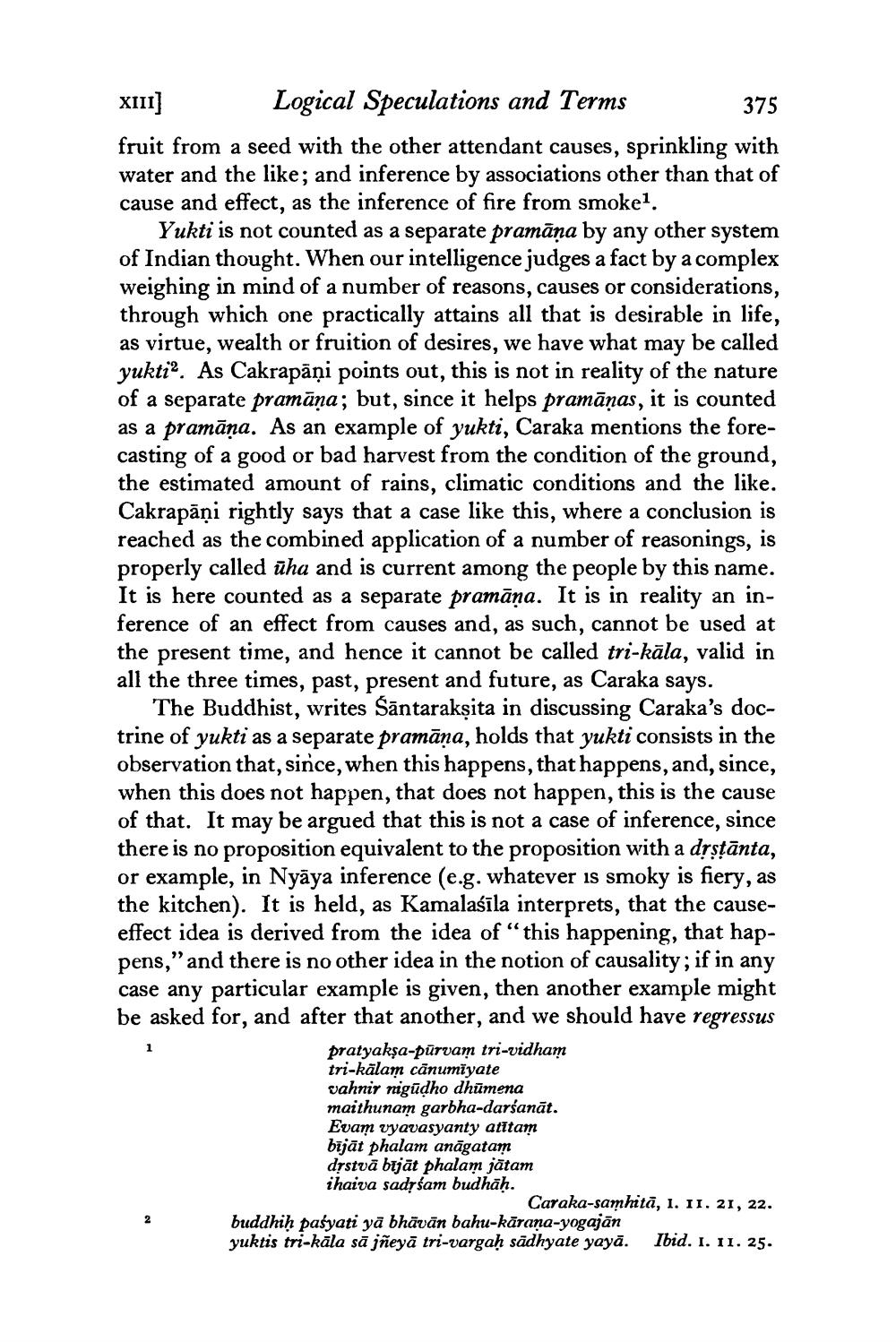________________
XIII) Logical Speculations and Terms
375 fruit from a seed with the other attendant causes, sprinkling with water and the like; and inference by associations other than that of cause and effect, as the inference of fire from smoke1.
Yukti is not counted as a separate pramāņa by any other system of Indian thought. When our intelligence judges a fact by a complex weighing in mind of a number of reasons, causes or considerations, through which one practically attains all that is desirable in life, as virtue, wealth or fruition of desires, we have what may be called yuktia. As Cakrapāņi points out, this is not in reality of the nature of a separate pramāņa; but, since it helps pramāņas, it is counted as a pramāņa. As an example of yukti, Caraka mentions the forecasting of a good or bad harvest from the condition of the ground, the estimated amount of rains, climatic conditions and the like. Cakrapāņi rightly says that a case like this, where a conclusion is reached as the combined application of a number of reasonings, is properly called üha and is current among the people by this name. It is here counted as a separate pramāņa. It is in reality an inference of an effect from causes and, as such, cannot be used at the present time, and hence it cannot be called tri-kāla, valid in all the three times, past, present and future, as Caraka says.
The Buddhist, writes Sāntarakṣita in discussing Caraka's doctrine of yukti as a separate pramāņa, holds that yukti consists in the observation that, since, when this happens, that happens, and, since, when this does not happen, that does not happen, this is the cause of that. It may be argued that this is not a case of inference, since there is no proposition equivalent to the proposition with a drsțānta, or example, in Nyāya inference (e.g. whatever is smoky is fiery, as the kitchen). It is held, as Kamalaśīla interprets, that the causeeffect idea is derived from the idea of “this happening, that happens," and there is no other idea in the notion of causality; if in any case any particular example is given, then another example might be asked for, and after that another, and we should have regressus
pratyakşa-pūrvam tri-vidham tri-kālam canumiyate vahnir migūdho dhūmena maithunam garbha-darśanāt. Evam vyavasyanty atitam bījāt phalam anāgatam dystvā bijāt phalam jātam ihaiva sadyśam budhāḥ.
Caraka-samhitā, 1. II. 21, 22. buddhih paśyati yā bhāvān bahu-kārana-yogajan yuktis tri-kāla sā jñeyā tri-vargaḥ sādhyate yayā. Ibid. 1. 11. 25.




